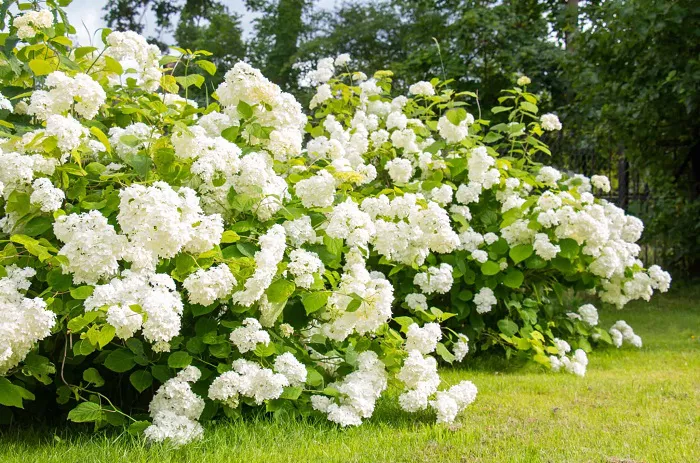Flowering shrubs add beautiful structure and seasonal color to any garden, providing a lush backdrop for smaller plants and filling in when other blooms fade. For beginner gardeners seeking low-maintenance options, several flowering shrubs stand out for their ease of care and stunning blossoms.
1.Crape Myrtle
Often grown as a tree, some varieties of crape myrtle are smaller and shrub-like, tolerating poor soils, heat, and low water needs. Their spectacular blooms arrive later than many shrubs, extending your garden’s color into summer and fall.
Plant crape myrtle in full sun with well-drained soil. Dig a hole three times wider than the root ball but no deeper, water thoroughly after planting, and mulch around the base. Water regularly during the first year, especially in dry spells. Avoid fertilizing to encourage blooms.
The best time to plant is early spring (March-April) or fall (September-October) in zones 6 to 9.
2.Texas Sage
This Southwestern native thrives in hot, dry climates with silvery foliage and bright magenta flowers. It’s perfect for dry spots where other plants struggle.
Texas sage requires minimal pruning-just remove spent flowers and thin older branches occasionally.
Plant it in full to partial sun with well-drained soil in spring (March-April) for best results.
3.Panicle Hydrangea
Panicle hydrangeas are lower-maintenance hydrangeas that tolerate more sun and less water than other types. Their long-lasting flowers bloom from summer to fall and are beautiful fresh or dried.
Plant them in partial sun with well-drained soil, mulch to retain moisture, and prune minimally.
Early spring (March-April) is ideal for planting in zones 5 to 9.
4.Serviceberry
A native shrub adaptable to many climates and soils, serviceberry offers sculptural branching and lovely fall foliage.
It thrives in full to partial sun and requires regular watering until established.
Plant serviceberry in early spring (March-April) to enjoy its spring blooms and attractive structure in your garden.
5.Camellia
For shade-loving flowering shrubs, camellias bloom from fall through spring and pair beautifully with rhododendrons.
They prefer partial sun to full shade and acidic, well-drained soil. Water well during establishment.
The best time to plant camellias is in the fall (September-November) in zones 6 to 10.
6.Rhododendron
These colorful shrubs brighten shady spots with blooms from late winter to early summer.
They require acidic, well-drained soil rich in organic matter, partial sun, and light pruning after flowering.
Plant rhododendrons in early spring (March-April) or fall (September-October) for best growth in zones 4 to 9.
7.Desert Willow
Ideal for drier areas of the Western U.S., desert willow thrives in full sun and well-drained, dry soil.
Its trumpet-shaped flowers range from creamy pink to deep magenta and attract local wildlife.
Plant desert willow in spring (March-April) to establish it before summer heat.
8.New Jersey Tea
A popular shrub in the Eastern U.S., New Jersey tea tolerates poor soil and various light conditions. It stays under three feet tall and features delicate white flowers in spring and summer.
Thanks to its nitrogen-fixing ability and deep roots, it’s drought tolerant. Plant New Jersey tea in early spring (March-April) in zones 4 to 8.
Tips for Choosing Easy-to-Grow Flowering Shrubs
Shrubs are a great choice for beginner gardeners because they generally require little care once established and cover a lot of ground. To ensure success, start by selecting planting locations with the right light, water, and soil conditions.
Mixing shrubs with staggered bloom times-like pairing early bloomers such as rhododendrons with later bloomers like crape myrtle-can keep your garden colorful throughout the year. Finally, planting in early fall or early spring gives shrubs time to establish roots before facing summer heat or winter cold.


